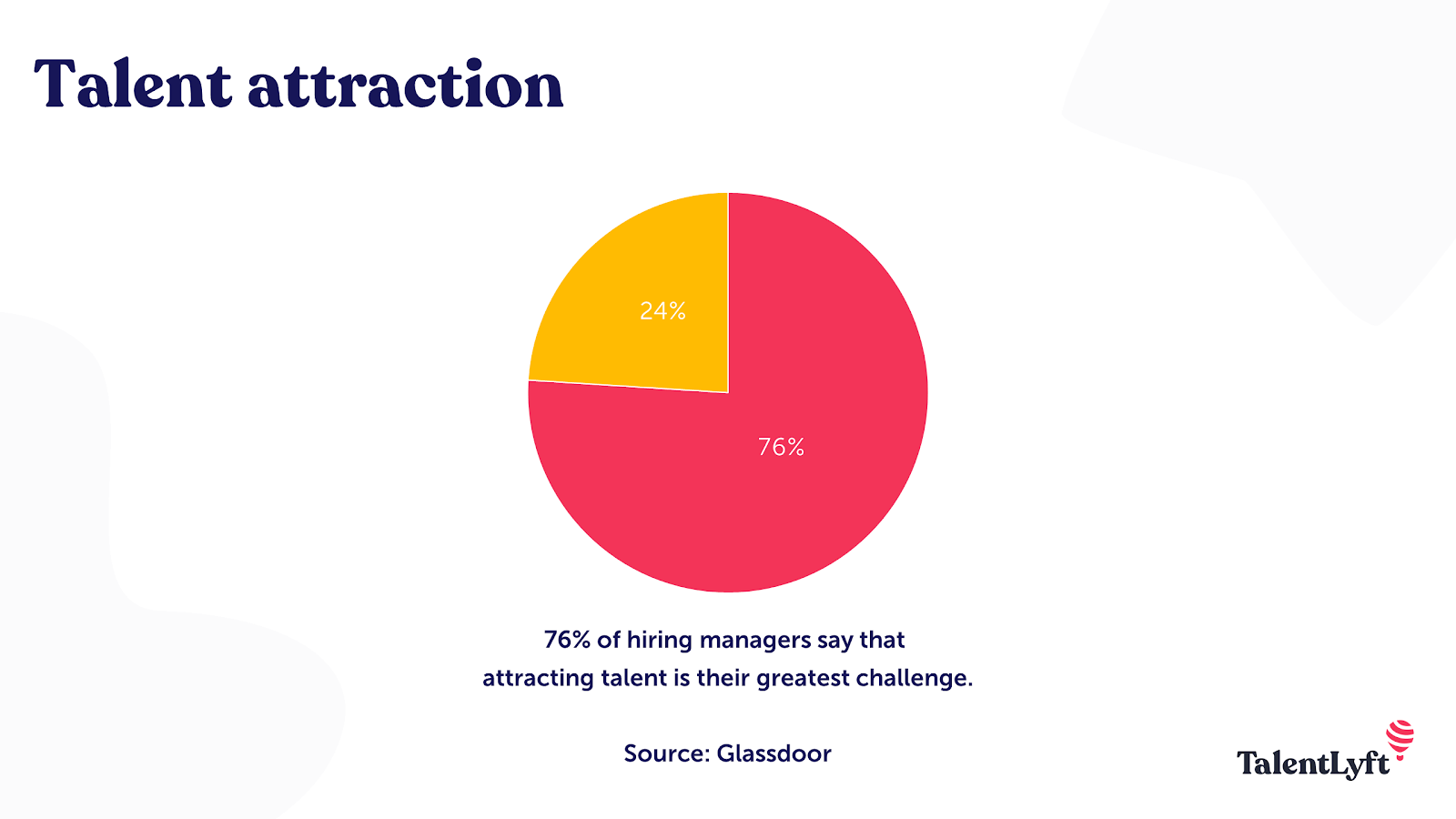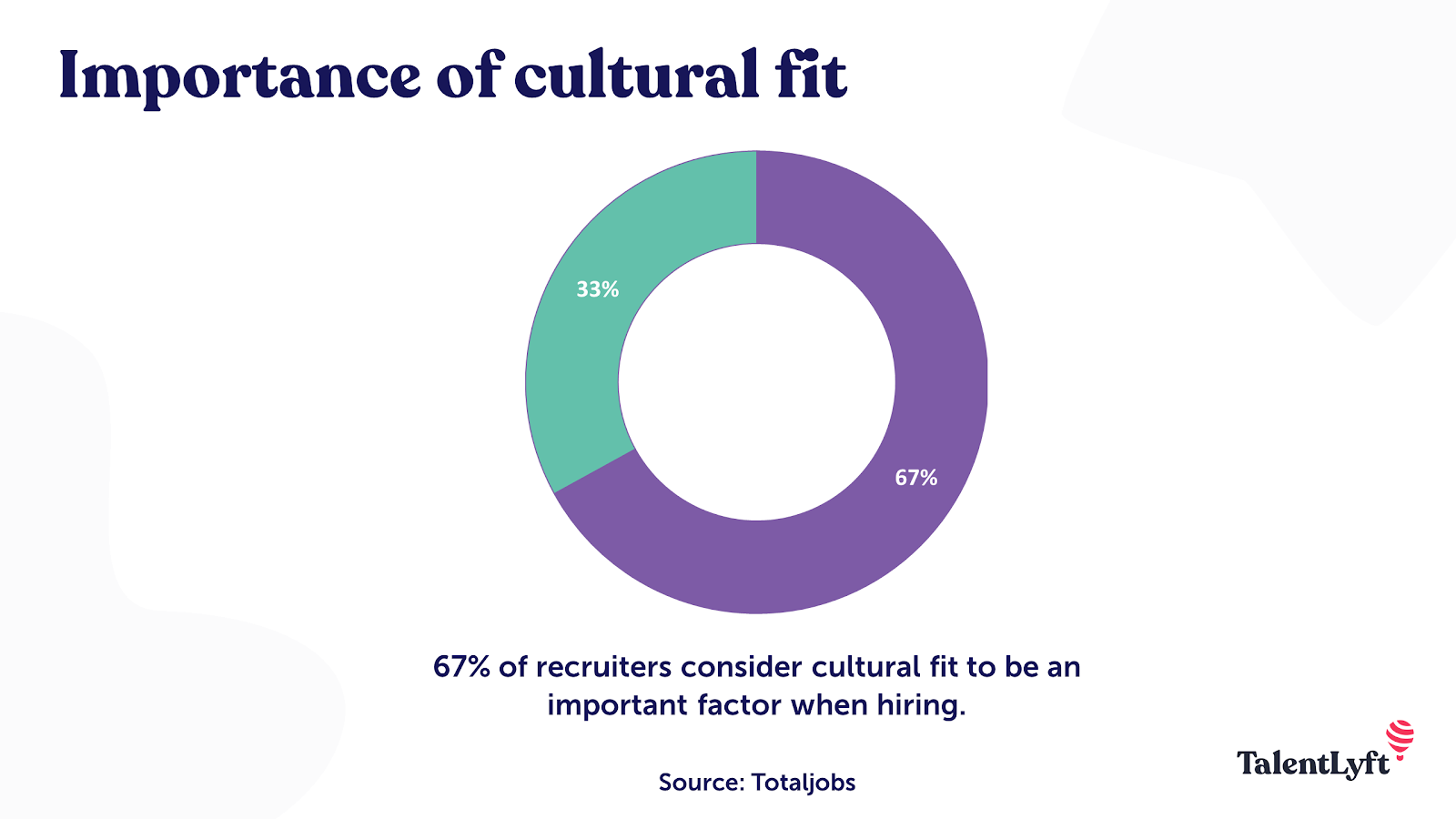
HR content is increasingly being adopted by forward-thinking HR teams and recruiters to help them attract and retain employees. Learn how to be among them and set up a meaningful HR content strategy in 5 simple steps!
HR content is increasingly being adopted by forward-thinking HR teams and recruiters to help them attract and retain employees. Learn how to be among them and set up a meaningful HR content strategy in 5 simple steps!
Once used almost exclusively within the worlds of marketing and sales enablement, content is slowly but surely showing signs of expanding into other areas of business.
For example, content is increasingly being adopted by forward-thinking HR teams and recruiters who have primarily been utilizing this engagement method for employee onboarding. Through content, these teams are finding that they are better equipped to attract talent and nurture relationships with prospective employees to maximize the chance of an offer being accepted, essentially boosting the effectiveness of their onboarding process.
But here’s a question to think about: Why is content only really being used for employee onboarding?
If content is being used to engage with prospective employees, why aren’t HR teams also using content to engage with existing employees? Content holds the potential to not only bring people onboard but actually keep them onboard; something that’s essential at a time when retention is becoming trickier.
If you thought that finding talent was hard, retaining talent is perhaps even harder. Talent retention is cited as one of the biggest challenges facing HR teams today, with 47% claiming that employee retention and staff turnover is ‘problematic’.

Long gone are the days where employees would remain with a company for the majority of their careers; today, the average person spends just 4.2 years in a role.
There are a number of reasons why this rate of staff turnover is causing headaches for growing businesses. One of these reasons is that onboarding can be costly. In fact, the average cost per hire in the United States is $4000.
Another consideration is that, even if a business has the necessary acquisition funds, it’s not always easy to identify a suitable replacement when an employee leaves. According to insights firm Gartner, the ‘global talent shortage is now the top emerging risk facing organizations’, with 63% of those questioned citing this as the most pressing issue they are experiencing.

There is an urgent need to not only continue attracting and engaging with great talent, but to also prioritize those resources that businesses already have onboard, and content can help with this.
So just how can content be applied to employee retention in a bid to minimize staff turnover? To answer that question, it’s important to look at employees in a similar way to how we typically look at our customers.
After all, there are many similarities between the two: both have expectations about the businesses they choose to work with, both need to be able to trust the business, they need to feel valued, they need to be cared for, and ultimately they need to have that feeling of complete loyalty. Turn the tables for a moment. If we felt undervalued as a customer, we wouldn’t purchase from that business. 43% of employees feel undervalued at work, so why would we expect them to stay in the role?
When there is a disconnect between business and customer, we work to improve processes and boost employee engagement… but are we really putting in as much effort to solve the business/employee disconnect Perhaps not. But we should be. And to do this, there needs to be greater collaboration within the workplace. Collaboration is one of this year’s buzzwords, but it’s one that really holds the potential to facilitate positive change.
By encouraging greater interactions and communications between HR teams who need to incorporate content, and marketing teams who already rely heavily on content, businesses can successfully develop a strong, strategic, and effective HR content strategy for improved retention.
HR teams that are already using content to attract new talent will find that there are a few differences when it comes to creating a content strategy to retain, rather than onboard.
That’s because this form of strategy really needs to focus on building or even rebuilding the connection between brand and employee; it needs to get employees excited not just about their future at the company, but also about their present position.
So here are 5 steps needed for any purposeful content strategy for retention:

In the same way that content is used to project an employer brand voice in the marketing world, it can also be used to reiterate and really reinforce what that employer brand values, and what it wants to achieve. This is becoming essential at a time when many employees appear to have lost track of their company’s core values.
Reports suggest that only 1 in 10 HR Managers believe that the majority of the workforce are clear on the business’ core values, so there is a clear need to realign employee goals with the business mission. Content is a powerful promotional tool for defining the brand voice, and HR-influenced content can really help to not only build this voice but actually deliver this brand message across the workforce.
Ultimately, it’s a way for employees to better identify themselves with the business; it helps them to see the bigger picture and associate what they do and what they want with what the firm wants and does.
There’s a big misconception when it comes to content: that ‘content’ means blog posts and articles. Of course, blog posts and articles do come under the content umbrella, but the truth is that anything a business produces can be classed as content… including web copy, videos, and even something as simple as contact details! So consider including some of the less obvious forms of content in your HR content strategy, such as information emails sent to employees, or even the creation of a regular newsletter.
These types of content can be used to generate excitement and buzz about upcoming projects or potential new clients; a great idea when there is an ever growing need for more transparency in the workplace.
Quite simply, transparency fosters employee happiness. If an employee is kept in-the-loop about future projects, they may be more likely to stick around. After all, research shows that employees are more loyal to their business if they have opportunities. Use content to give your valuable human resources hope; share information that really gives them something that’s worth sticking around for.
Content doesn’t have to be created exclusively by HR teams or marketing teams. In fact, content can be used to encourage employees to get more involved in business operations through the generation of peer-generated opinion pieces. And not only does this work to boost an employee’s involvement in the company, it also helps employees to feel more trusted to participate. And trust is a big factor in loyalty.
Let’s take a look at the Netflix example. Former Chief Talent Officer Patty McCord was a whirlwind force when she joined the team. In fact, at one of her first meetings with the workforce, she said “I’m going to get rid of our expense policy and I’m going to get rid of the travel policy, and I want you to just use good judgment about how you spend the company’s money”. She placed her trust in the firm’s employees.
Despite warnings from the legal team, Netflix actually found that trusting employees turned out to be a huge advantage. “We found that people didn’t abuse the freedom. We saw that we could treat people like adults and that they loved it”. Employees want to be trusted, and content can satisfy this desire through providing the workforce with freedom to act; freedom to create content they really care about. Adobe is a pioneer in this, having implemented their Social Shift Program which provides social media training for employees, giving them the confidence they need to create content on behalf of Adobe.
Even the most interesting of job can start to feel mundane after a while, and this is when employees may start to crave something different and begin looking for a change. It’s reported that 52% are sleepwalking through their work day, acting almost as if they were on autopilot. When this happens, jobs can easily lose their meaning, but content can help to get it back and reignite the passion and spark.

When employees are operating on autopilot, there is a need to press the reset button; to pause, and really get them thinking about what they do, and why they do it. Employees should be encouraged to create their own evergreen content - content that isn’t about topical news or recent happenings within the industry, but something more long term that helps them to reconnect with their purpose.
Consider asking employees to produce pieces such as ‘why work for….’ or ‘a day in the life of…’, forcing them to really think about why they’re here and helping them to rediscover the love for what it is that they do.
This type of content can enable employees to better understand how their own personal efforts can contribute towards the core business; something that can be difficult, especially in businesses with a very formal organizational structure and hierarchy. It can also make employees proud of the work they do, providing them with a reason to keep getting up, coming to work, and performing at their very best.
Quite simply, the better the initial hire, the better the future retention. Through selective recruitment, it’s possible to bring onboard those candidates who are best suited to the business, who share the organization’s vision, and who will continue to feel fulfilled within the working environment. Employees are perhaps more likely to remain loyal to a business if they were provided with a wide range of information prior to interview, so businesses should always aim to start out on the right foot.
Let’s consider one of the most common reasons why employees leave. 75% say that they have quit a job because they felt that they were a poor cultural fit for the organization, or that the organization was a poor cultural fit for them.

This is something that can easily be remedied through the availability of relevant content during the recruitment process. Content can be used as a tool for preparing candidates for a long term future at the company by showing candidates what they can expect from the position.
There are lots of different forms of content that can be used to promote an organization’s culture, such as peer-generated content, employee recognition and achievements, and posts referencing ‘extracurricular’ events and efforts. It’s easier to retain a worker who knows they’re in the right place.
Keeping talent onboard is a task that shouldn’t fall exclusively on an HR department; there needs to be collaboration and teamwork between HR professionals and marketing experts, who can come together to generate a solid HR content strategy that provides employees with the motivation to stick around.
This is especially important right now, in what is being labeled a ‘job seekers market’. It was recently announced that there are 7.6 million vacancies in the United States, yet only 6.5 million people are said to be actively looking for work, so keeping your employees onboard in this landscape is essential.
And right now, more needs to be done to achieve this. Businesses should be seeking new ways to connect and engage with their valuable human resources, and content is the key to success.
Josip Mlinaric is e-mail marketing and outreach specialist at Point Visible, a marketing agency providing custom outreach and link building service.
He likes to say he has a simple and calm mindset in his approach towards life in general and likes to relax by experimenting in the kitchen or just chilling listening to music.
What is the purpose of HR content strategy?
HR content strategy aims to align brand and employee goals, boosting employer brand voice, and promoting employee engagement and retention.
How can industry insights and company news improve HR content?
Sharing these updates fosters transparency and keeps employees informed and engaged, potentially increasing their loyalty and commitment.
Why is enabling employee content contributions important?
Allowing employees to generate content fosters a sense of trust and involvement, enhancing their engagement and loyalty to the company.
How does content help reignite employees' passion for their work?
Content that encourages reflection on employees' roles and contributions can help them reconnect with their purpose and reignite their passion.
How does starting on the right foot impact employee retention?
Selective recruitment and providing comprehensive information upfront can ensure a better cultural fit and long-term employee satisfaction and retention.







![[GUIDE] How to Segment Your Talent Pool](https://adoptostaging.blob.core.windows.net/article/0pOm3nwXhEm6SEPThfIO2Q.png?8619)


